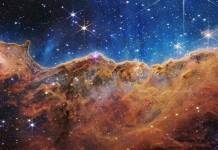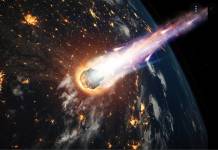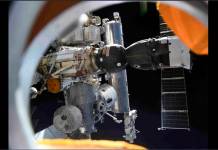
New Horizons discovers Pluto is painting Charon
The big red patch of Charon, Pluto’s largest moon, is no longer a mystery. The red soil came from a nearby source: Pluto. When the New Horizons probe flew around the tiniest planet in the Solar System, scientists were able to unveil how the world painted Charon.
NASA announced the rust-colored spot on the northern pole of the satellite came from methane gas that Pluto creates on its upper atmosphere and then escapes and becomes trapped on Charon’s gravity.
The space agency says Charon experiences cold enough winters to freeze the gas-solid in its poles. Then, when the spring comes, the ultraviolet light transforms the methane into hydrocarbons and eventually into red materials called tholins.
NASA says both poles are painted red
When New Horizons flew by Charon, it captured proof the south pole was similarly painted in red, but it was impossible to take images of the dark side of the moon.
As Pluto’s orbit around the Sun takes around 248 years, the alien surface lives about 100 years of cold and pitch darkness, and 100 years of sunlight. When it is coldest, temperatures go down to -430 Fahrenheit (-256.66 Celsius).
Charon completes a lap around Pluto every six days, while the rest of the satellites in the system orbit around those two celestial bodies, like a binary planet. Charon is as big as the state of Texas, with a diameter of 753 miles, while the red do would cover the state of New Mexico.
New Horizon’s next target is the Kuiper Belt
NASA feels euphoric with the probe’s mission. Jim Green, Director of Planetary Science, said the agency believed the mission to Pluto exceeded their expectations, and the data had not ceased to surprise.
New Horizons will not stop with Pluto. The probe will continue its interstellar journey and study the Kuiper Belt. NASA does not know a lot about the celestial bodies that form the outer belt of our Solar system.
New Horizons intends to go to object 2014 MU69. It sits 1 billion miles away from the outer edge. Is it also one of many objects in the belt that formed billion years ago, during the early stages of the Solar System.
Because these bodies are far from the Sun, they contain pristine relics of the oldest materials from which the system formed. If everything runs smoothly, the spacecraft will reach MU69 on January 1, 2019.
New Horizons launched on January 19, 2006, from Cape Canaveral Air Force Station in Florida. It made a gravitational flight to Jupiter and turned the hibernation mode towards its destination until December 6, 2014, on its first Pluto encounter.
Source: NASA











